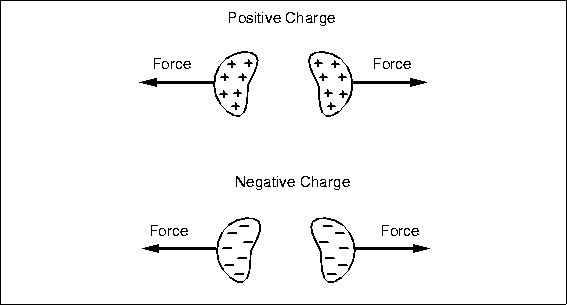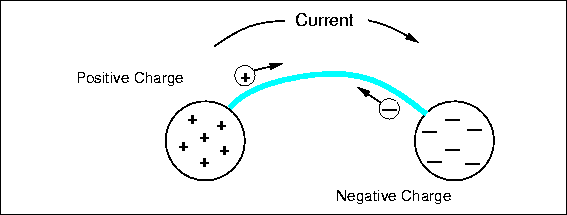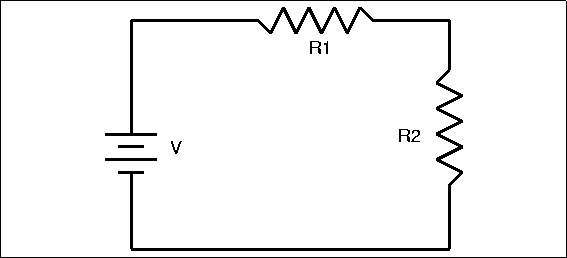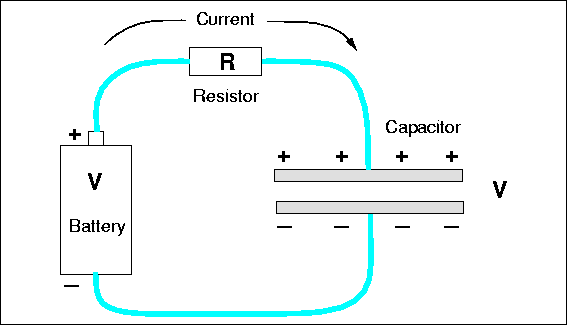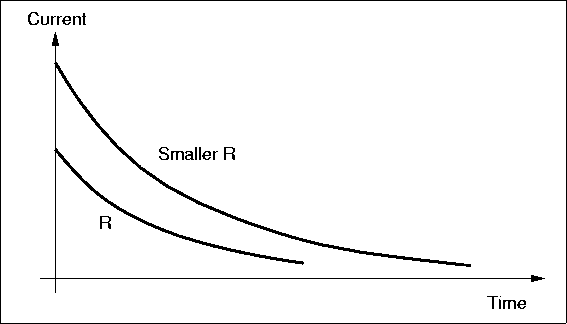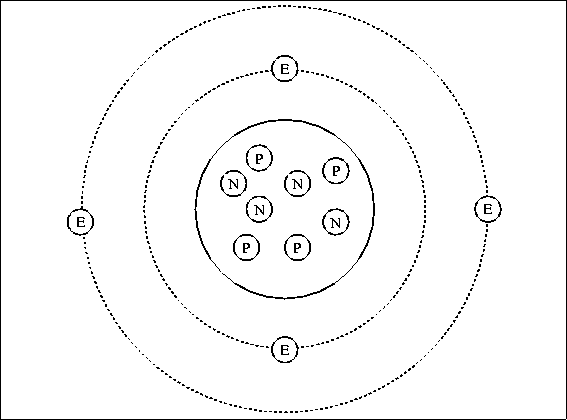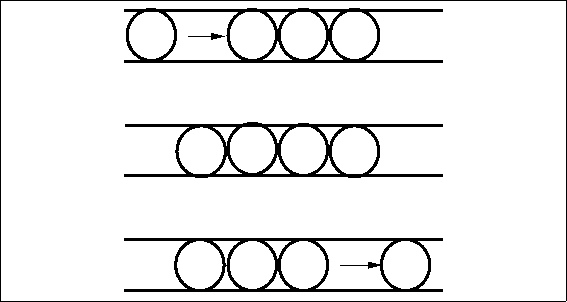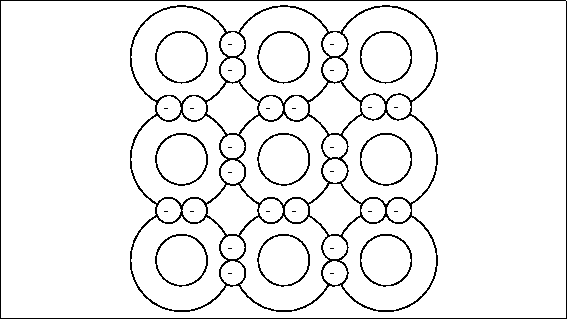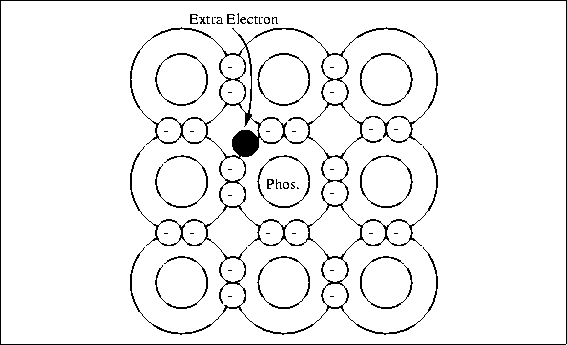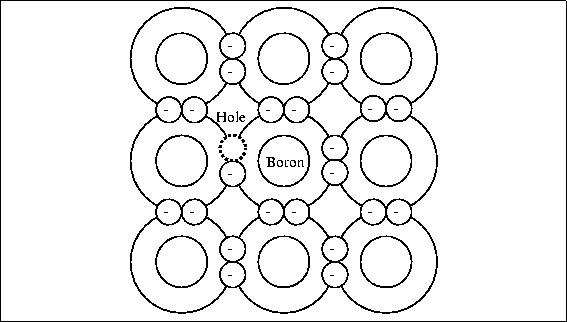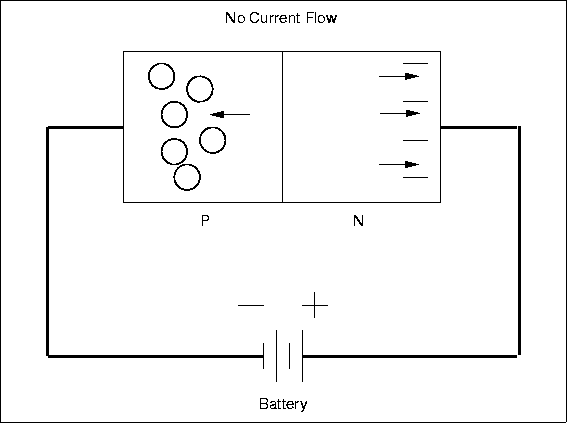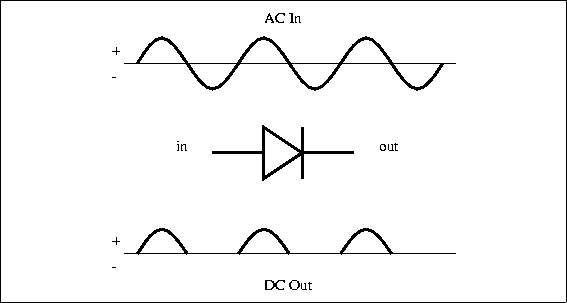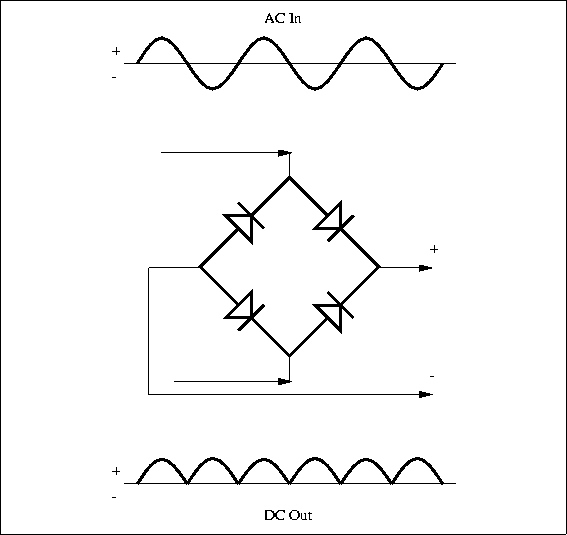http://www.corelis.com/education/JTAG_Tutorial.htm
JTAG Tutorial
Since its introduction as an
industry standard in 1990, boundary-scan (also known as
JTAG) has enjoyed growing popularity for board level
manufacturing test applications. JTAG has rapidly
become the technology of choice for building reliable high
technology electronic products with a high degree of
testability. Due to the low-cost and IC level access
capabilities of JTAG, its use has expanded beyond
traditional board test applications into product design and
service.
This article provides a brief overview of the JTAG
architecture and the new technology trends that make using
JTAG essential for dramatically reducing
development and production costs, speeding test development
through automation, and improving product quality because of
increased fault coverage. The article also describes the
various uses of JTAG and the tools available today
for supporting JTAG technology.
Outline
-
What is
JTAG?

Overview of the JTAG architecture and the new
technology trends that make using JTAG essential for
dramatically reducing development and production costs. The
article also describes the various uses of JTAG and the
tools available today for supporting JTAG technology.
-
-
JTAG Applications

Read how JTAG technology can be applied to the whole
product life cycle including product design, prototype
debugging, production, and field service. This means the cost of
the JTAG tools can be amortized over the entire product
life cycle, not just the production phase.
-
What is JTAG?
JTAG, as defined by the
IEEE Std.-1149.1 standard,
is an integrated method for testing interconnects on printed
circuit boards (PCBs) that are implemented at the integrated
circuit (IC) level. The inability to test highly complex and
dense printed circuit boards using traditional in-circuit
testers and bed of nail fixtures was already evident in the
mid eighties. Due to physical space constraints and loss of
physical access to fine pitch components and BGA devices,
fixturing cost increased dramatically while fixture
reliability decreased at the same time.
A Brief History of JTAG
In the
1980s, the Joint Test Action Group (JTAG) developed a
specification for JTAG testing that was
standardized in 1990 as the IEEE Std. 1149.1-1990. In 1993 a
new revision to the IEEE Std. 1149.1 standard was introduced
(titled 1149.1a) and it contained many clarifications,
corrections, and enhancements. In 1994, a supplement
containing a description of the
Boundary-Scan Description
Language (BSDL) was added to the standard. Since that time,
this standard has been adopted by major electronics
companies all over the world. Applications are found in high
volume, high-end consumer products, telecommunication
products, defense systems, computers, peripherals, and
avionics. In fact, due to its economic advantages, some
smaller companies that cannot afford expensive in-circuit
testers are using JTAG.
The
JTAG test architecture provides a means to test
interconnects between integrated circuits on a board without
using physical test probes. It adds a boundary-scan cell
that includes a multiplexer and latches to each pin on the
device. Boundary-scan cells in a device can capture data
from pin or core logic signals, or force data onto pins.
Captured data is serially shifted out and externally
compared to the expected results. Forced test data is
serially shifted into the boundary-scan cells. All of this
is controlled from a serial data path called the scan path
or scan chain. Figure 1 depicts the main elements of a JTAG
device. By allowing direct access to nets,
JTAG eliminates the need for a large number of test
vectors, which are normally needed to properly initialize
sequential logic. Tens or hundreds of vectors may do the job
that had previously required thousands of vectors. Potential
benefits realized from the use of JTAG are shorter
test times, higher test coverage, increased diagnostic
capability and lower capital equipment cost.

Figure 1 - Typical JTAG Device
The principles of interconnect
test using JTAG are illustrated in Figure 2. Figure
2 depicts two JTAG compliant devices, U1 and U2,
which are connected with four nets. U1 includes four outputs
that are driving the four inputs of U2 with various values.
In this case, we assume that the circuit includes two
faults: a short between Nets 2 and 3, and an open on Net 4.
We will also assume that a short between two nets behaves as
a wired-AND and an open is sensed as logic 1. To detect and
isolate the above defects, the tester is shifting into the
U1 boundary-scan register the patterns shown in Figure 2 and
applying these patterns to the inputs of U2. The inputs
values of U2 boundary-scan register are shifted out and
compared to the expected results. In this case, the results
(marked in red) on Nets 2, 3, and 4 do not match the
expected values and, therefore, the tester detects the
faults on Nets 2, 3, and 4.
JTAG tool vendors
provide various types of stimulus and sophisticated
algorithms, not only to detect the failing nets, but also to
isolate the faults to specific nets, devices, and pins.
 Figure 2 - Interconnect Test
Example
Figure 2 - Interconnect Test
Example
JTAG Chip Architecture
The IEEE-1149.1 standard
defines test logic in an integrated circuit which
provides applications to perform:
JTAG Scan Chain with
Multiple Chips
JTAG Test Vectors

JTAG TAP Interface
JTAG TAP Interface Signals
|
Abbreviation |
Signal |
Description |
| TCK |
Test
Clock |
Synchronizes the internal state machine operations |
| TMS |
Test
Mode State |
Sampled
at the rising edge of TCK to determine the
next state |
| TDI |
Test
Data In |
Represents the data shifted into the device's test or
programming logic. It is sampled at the rising edge of TCK
when the internal state machine is in the correct state. |
| TDO |
Test
Data Out |
Represents the data shifted out of the device's test or
programming logic and is valid on the falling edge of TCK
when the internal state machine is in the correct state |
| TRST |
Test
Reset |
An
optional pin which, when available, can reset the TAP
controller's state machine |
Required Test Instructions
Working in conjunction with the TAP
controller is an IR (Instruction Register) providing which type
of test to perform. The 1149.1 Standard requires that all
compliant devices must perform the following three instructions:
-
EXTEST Instruction
The EXTEST instruction performs a PCB interconnect test,
places an IEEE 1149.1 compliant device into an external
boundary test mode, and selects the boundary scan
register to be connected between TDI and TDO. During
EXTEST instruction, the boundary scan cells associated
with outputs are preloaded with test patterns to test
downstream devices. The input boundary cells are set up
to capture the input data for later analysis.
-
SAMPLE/PRELOAD
Instruction
The SAMPLE/PRELOAD instruction allows an IEEE 1149.1
compliant device to remain in its functional mode and
selects the boundary scan register to be connected
between the TDI and TDO pins. During SAMPLE/PRELOAD
instruction, the boundary scan register can be accessed
through a data scan operation, to take a sample of the
functional data input/output of the device. Test data
can also be preloaded into the boundary-scan register
prior to loading an EXTEST instruction.
-
BYPASS Instruction
Using the BYPASS instruction, a device's boundary scan
chain can be skipped, allowing the data to pass through
the bypass register. This allows efficient testing of a
selected device without incurring the overhead of
traversing through other devices. The BYPASS instruction
allows an IEEE 1149.1 compliant device to remain in a
functional mode and selects the bypass register to be
connected between the TDI and TDO pins. Serial data is
allowed to be transferred through a device from the TDI
pin to the TDO pin without affecting the operation of
the device.
JTAG Applications
While it is obvious that
JTAG based testing can be used in the production
phase of a product, new developments and applications of the
IEEE-1149.1 standard have enabled the use of JTAG
in many other product life cycle phases. Specifically,
JTAG technology is now applied to product design,
prototype debugging and field service as depicted in Figure
3. This means the cost of the JTAG tools can be
amortized over the entire product life cycle, not just the
production phase.

Figure 3 - Product Life Cycle Support
To facilitate this product life cycle concept,
JTAG
tool vendors such as Corelis offer an integrated family of
software and hardware solutions for all phases of a
product’s life-cycle. All of these products are compatible
with each other, thus protecting the user’s investment.
Applying JTAG for Product
Development
The ongoing marketing drive for reduced product size, such
as portable phones and digital cameras, higher functional
integration, faster clock rates, and shorter product
life-cycle with dramatically faster time-to- market has
created new technology trends. These trends include
increased device complexity, fine pitch components, such as
surface-mount technology (SMT), systems-in-package (SIPs),
multi-chip modules (MCMs), ball-grid arrays (BGAs),
increased IC pin-count, and smaller PCB traces. These
technology advances, in turn, create problems in PCB
development:
-
Many boards include
components that are assembled on both sides of the
board. Most of the through-holes and traces are buried
and inaccessible.
-
Loss of physical access to
fine pitch components, such as SMTs and BGAs, makes it
difficult to probe the pins and distinguish between
manufacturing and design problems.
-
Often a prototype board is
hurriedly built by a small assembly shop with lower
quality control as compared to a production house. A
prototype generally will include more assembly defects
than a production unit.
-
When the prototype arrives,
a test fixture for the ICT is not available and,
therefore, manufacturing defects cannot be easily
detected and isolated.
-
Small-size products do not
have test points, making it difficult or impossible to
probe suspected nodes.
-
Many Complex Programmable
Logic Devices (CPLDs) and flash memory devices (in BGA
packages) are not socketed and are soldered directly to
the board.
-
Every time a new processor
or a different flash device is selected, the engineer
has to learn from scratch how to program the flash
memory.
-
When a design includes
CPLDs from different vendors, the engineer must use
different in-circuit programmers to program the CPLDs.
JTAG technology is the only cost-effective solution
that can deal with the above problems. In recent years, the
number of devices that include JTAG has grown
dramatically. Almost every new microprocessor that is being
introduced includes JTAG circuitry for testing and
in-circuit emulation. Most of the CPLD and field
programmable array (FPGA) manufacturers, such as Altera,
Lattice and Xilinx, to mention a few, have incorporated
JTAG logic into their components, including
additional circuitry that uses the JTAG four-wire
interface to program their devices in-system.
As the acceptance of JTAG as the main technology
for interconnect testing and in-system programming (ISP) has
increased, the various JTAG test and ISP tools have
matured as well. The increased number of JTAG
components and mature JTAG tools, as well as other
factors that will be described later, provide engineers with
the following benefits:
-
Easy to implement Design-For- Testability (DFT) rules. A
list of basic DFT rules is provided later in this
article.
-
Design analysis prior to PCB layout to improve
testability.
-
Packaging problems are found prior to PCB layout.
-
Little need for test points.
-
No need for test fixtures.
-
More control over the test process.
-
Quick diagnosis (with high resolution) of interconnection
problems without writing any functional test code.
-
Program code in flash devices.
-
Design configuration data placement into CPLDs.
-
JTAG emulation and source-level debugging.
What JTAG Tools are needed?
In the previous section, we listed many of the benefits that
a designer enjoys when incorporating boundary-scan in his
product development. In this section we describe the tools
and design data needed to develop JTAG test
procedures and patterns for ISP, followed by a description
of how to test and program a board. We use a typical board
as an illustration for the various JTAG test
functions needed. A block diagram of such a board is
depicted in Figure 4.

Figure 4 -
Typical Board with JTAG Components
A typical digital board with
JTAG devices includes the following main
components:
-
Various JTAG
components such as CPLDs, FPGAs, Processors, etc., chained
together via the boundary-scan path.
-
Non-JTAG components
(clusters).
-
Various types of memory
devices.
-
Flash Memory components.
-
Transparent components such
as series resistors or buffers.
Most of the boundary-scan test systems are comprised of two
basic elements: Test Program Generation and Test Execution.
Generally, a Test Program Generator (TPG) requires the
netlist of the Unit Under Test (UUT) and the BSDL files of
the JTAG components. The TPG automatically
generates test patterns that allow fault detection and
isolation for all JTAG testable nets of the PCB. A
good TPG can be used to create a thorough test pattern for a
wide range of designs. For example, ScanExpress TPG typically
achieves net coverage of more than 60%, even though the
majority of the PCB designs are not optimized for
boundary-scan testing. The TPG also creates test vectors to
detect faults on the pins of non-scannable components, such
as clusters and memories that are surrounded by scannable
devices.
Some TPGs also generate a test coverage report that allows
the user to focus on the non-testable nets and determine
what additional means are needed to increase the test
coverage.
Test programs are generated in seconds. For example, when
Corelis ScanExpress TPG™ was used, it took a 3.0 GHz Pentium
4 PC 23 seconds to generate an interconnect test for a UUT
with 5,638 nets (with 19,910 pins). This generation time
includes netlist and all other input files processing as
well as test pattern file generation.
Test execution tools from various vendors provide means for
executing JTAG tests and performing in-system
programming in a pre-planned specific order, called a test
plan. Test vectors files, which have been generated using
the TPG, are automatically applied to the UUT and the
results are compared to the expected values. In case of a
detected fault, the system diagnoses the fault and lists the
failures as depicted in Figure 5. Figure 5 shows the main
window of the Corelis test execution tool, ScanExpress
Runner™. ScanExpress Runner gives the user an overview of
all test steps and the results of executed tests. These
results are displayed both for individual tests as well as
for the total test runs executed. ScanExpress Runner
provides the ability to add or delete various test steps
from a test plan, or re-arrange the order of the test steps
in a plan. Tests can also be enabled or disabled and the
test execution can be stopped upon the failure of any
particular test.
Different test plans may be constructed for different UUTs.
Tests within a test plan may be re-ordered, enabled or
disabled, and unlimited different tests can be combined into
a test plan. ScanExpress Runner can be used to develop a
test sequence or test plan from various independent
sub-tests. These sub-tests can then be executed sequentially
as many times as specified or continuously if desired. A
sub-test can also program CPLDs and flash memories. For ISP,
other formats, such as SVF, JAM, and STAPL, are also
supported.
To test the board depicted in Figure 4, the user must
execute a test plan that consists of various test steps as
shown in Figure 5.

Figure 5 - ScanExpress Runner Main Window
The first and most important test is the scan chain
infrastructure integrity test. The scan chain must work
correctly prior to proceeding to other tests and ISP.
Following a successful test of the scan chain, the user can
proceed to testing all the interconnections between the
JTAG components. If the interconnect test fails, ScanExpress Runner displays a diagnostic screen that
identifies the type of failure (such as stuck-at, Bridge,
Open) and lists the failing nets and pins as shown in Figure
6. Once the interconnect test passes, including the testing
of transparent components, it makes sense to continue
testing the clusters and the memory devices. At this stage,
the system is ready for in-system programming, which
typically takes more time as compared to testing.
Figure 6 - ScanExpress Runner Diagnostics Display
During the design phase of a product, some JTAG
vendors will provide design assistance in selecting
JTAG-compliant components, work with the developers
to ensure that the proper BSDL files are used, and provide
advice in designing the product for testability.
Applying JTAG for Production Test
Production testing, utilizing
traditional In-Circuit Testers that do not have
JTAG features installed, experience similar
problems that the product developer had and more:
-
Loss of physical access to fine pitch components, such as
SMTs and BGAs, reduces bed-of-nails ICT fault isolation.
-
Development of test fixtures for ICTs becomes longer and
more expensive.
-
Development of test procedures for ICTs becomes longer and
more expensive due to more complex ICs.
-
Designers are forced to bring out a large number of test
points, which is in direct conflict with the goal to
miniaturize the design.
-
In-system programming is inherently slow, inefficient, and
expensive if done with an ICT.
-
Assembling boards with BGAs is difficult and subject to
numerous defects, such as solder smearing.
JTAG Embedded Functional Test
Recently, a test methodology has been developed which
combines the ease-of-use and low cost of boundary-scan with
the coverage and security of traditional functional testing.
This new technique, called JTAG Emulation Test (JET), lets
engineers automatically develop PCB functional test that can
be run at full speed., If the PCB has an on-board processor
with a JTAG port (common, even if the processor doesn’t
support boundary-scan), JET and boundary-scan tests can be
executed as part of the same test plan to provide extended
fault coverage to further complement or replace ICT testing.
Corelis ScanExpress JET™ provides JTAG embedded test for a
wide range of processors. For more information about this
technology and product, visit the
ScanExpress JET product page.
Production Test Flow
Figure 7 shows different production flow configurations. The
diagram shows two typical ways that JTAG is
deployed:
-
As a stand-alone application at a separate test station or
test bench to test all the interconnects and perform ISP
of on-board flash and other memories. JTAG embedded
functional test (JET) may be integrated with
boundary-scan.
-
Integrated into the ICT system, where the JTAG control
hardware is embedded in the ICT system and the
boundary-scan (and possibly JET) software is a module
called from the ICT software system.
 Figure 7 - Typical
Production Flow Configurations
Figure 7 - Typical
Production Flow Configurations
In the first two cases, the test flow is sometimes augmented
with a separate ICT stage after the JTAG-based testing is
completed, although it is becoming more common for ICT to be
skipped altogether or at least to be limited to analog or
special purpose functional testing.
The following are major benefits in using JTAG test
and in-system programming in production:
-
No need for test fixtures.
-
Integrates product development, production test, and
device programming in one tool/system.
-
Engineering test and programming data is reused in
Production.
-
Fast test procedure development.
-
Preproduction testing can start the next day when
prototype is released to production.
-
Dramatically reduces inventory management – no
pre-programmed parts eliminates device handling and ESD
damage.
-
Eliminates or reduces ICT usage time – programming and
screening.
Production test is an obvious area in which the use of
boundary-scan yields tremendous returns. Automatic test
program generation and fault diagnostics using JTAG
software products and the lack of expensive fixturing
requirements can make the entire test process very
economical. For products that contain edge connectors and
digital interfaces that are not visible from the
boundary-scan chain, JTAG vendors offer a family of
boundary-scan controllable I/Os that provide a low cost
alternative to expensive digital pin electronics.
Field Service and Installation
The role of JTAG does not end when a product ships.
Periodic software and hardware updates can be performed
remotely using the boundary-scan chain as a non-intrusive
access mechanism. This allows flash updates and
reprogramming of programmable logic, for example. Service
centers that normally would not want to invest in special
equipment to support a product now have an option of using a
standard PC or laptop for JTAG testing. A simple
PC-based JTAG controller can be used for all of the
above tasks and also double as a fault diagnostic system,
using the same test vectors that were developed during the
design and production phase. This concept can be taken one
step further by allowing an embedded processor access to the
boundary-scan chain. This allows diagnostics and fault
isolation to be performed by the embedded processor. The
same diagnostic routines can be run as part of a power-on
self-test procedure.
JTAG Design-for-Test Basic
Considerations
As mentioned earlier in this article, the design for
JTAG test guidelines are simple to understand and
follow compared to other traditional test requirements. It
is important to remember that JTAG testing is most
successful when the design and test engineering teams work
together to ensure that testability is “designed in” from
the start. The boundary-scan chain is the most critical part
of JTAG implementations. When that is properly
implemented, improved testability inevitably follows.
Below is a list of basic guidelines to observe when
designing a JTAG-testable board:
-
If there are programmable components in a chain, such as
FPGAs, CPLDs, etc., group them together in the chain
order and place the group at either end of the chain. It
is recommended that you provide access to Test Data In (TDI)
and Test Data Out (TDO) signals where the programmable
group connects to the non-programmable devices.
-
All parts in the boundary-scan chain should have
1149.1-compliant test access ports (TAPs).
-
Use simple buffering for the Test Clock (TCK) and Test
Mode Select (TMS) signals to simplify test
considerations for the boundary-scan TAP. The TAP
signals should be buffered to prevent clocking and drive
problems.
-
Group similar device families and have a single level
converter interface between them, TCK, TMS, TDI, TDO,
and system pins.
-
TCK should be properly routed to prevent skew and noise
problems.
-
Use the standard JTAG connector on your board as depicted
in Corelis documentation.
-
Ensure that BSDL files are available for each
JTAG component that is used on your board and
that the files are validated.
Design for interconnect testing requires board-level system
understanding to ensure higher test coverage and elimination
of signal level conflicts.
-
Determine which JTAG components are on the board.
Change as many non-JTAG components to IEEE
1149.1-compliant devices as possible in order to
maximize test coverage.
-
Check non-JTAG devices on the board and design
disabling methods for the outputs of those devices in
order to prevent signal level conflicts. Connect the
enable pins of the conflicting devices to JTAG
controllable outputs. Corelis tools will keep the
enable/disable outputs at a fixed disabling value during
the entire test.
-
Ensure that your memory devices are surrounded by
JTAG components. This will allow you to use a
test program generator, such as ScanExpress TPG, to test
the interconnects of the memory devices.
-
Check the access to the non-boundary-scan clusters. Make
sure that the clusters are surrounded by JTAG
components. By surrounding the non-boundary-scan
clusters with JTAG devices, the clusters can
then be tested using a JTAG test tool.
-
If your design includes transparent components, such as
series resistors or non-inverting buffers, your test
coverage can be increased by testing through these
components using ScanExpress TPG.
-
Connect all I/Os to JTAG controllable devices.
This will enable the use of JTAG, digital I/O
module, such as the ScanIO-300LV, to test all your I/O
pins, thus increasing test coverage.
Summary
JTAG is a widely practiced test methodology that is
reducing costs, speeding development, and improving product
quality for electronics manufacturers around the world. By
relying on an industry standard, IEEE 1149.1, it is
relatively quick, easy, and inexpensive to deploy a highly
effective test procedure. Indeed, for many of today’s PCBs,
there is little alternative because of limited access to
board-level circuitry. This paper highlights just some of
the potential applications of the JTAG standard in
various stages of the product life cycle, each contributing
to the overall effect of significantly reduced product
development and support costs.
References
The IEEE Std 1149.1-1990 - Test
Access Port and JTAG Architecture, and the Std
1149.1-1994b - Supplement to IEEE Std 1149.1-1990, are
available from the IEEE Inc., 345 East 47th Street, New
York, NY 10017, USA, 1-800-678-IEEE (USA), 1-908-981-9667
(Outside of USA). You can also obtain a copy of the IEEE
1149.1 standard from
http://www.ieee.com/


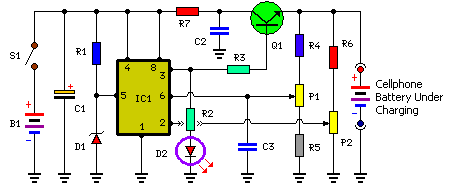













 JTAG TAP Interface
JTAG TAP Interface





